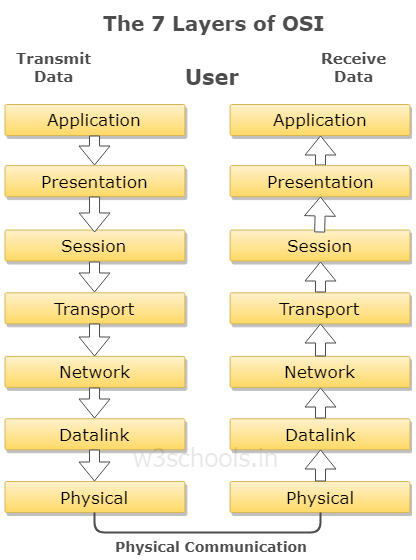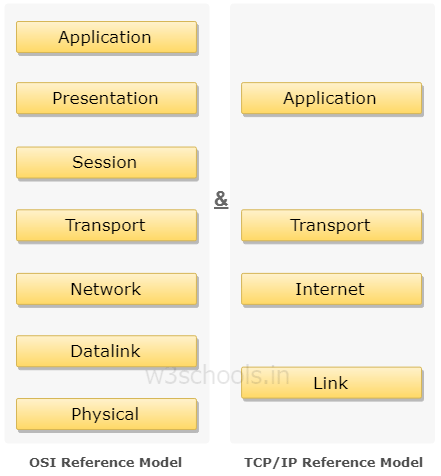In the world of web and internet, the term "reference model" defined a standard means of communication architecture which is accepted worldwide. As users are using the network of a system and are situated over a broad physical range and even the network devices users are using might have different architecture. So, for providing a standard communication between these heterogeneous devices, a standardized model (also termed as a reference model) is necessary for providing us the way how different devices have to communicate despite their diverse architecture. For this reason, two models were designed where one is based on hypothetical communication architecture (OSI model) while the other is based on a fully practical model (TCP/IP model). In this chapter, you will learn about the two popular internet reference models.
OSI model
The Open System Interconnection (OSI) is hypothetical models that label a framework of networking for implementing protocols distributed in 7-layers. It is a non-tangible model based on some hypothetical working mechanism. This model does not achieve any real purpose in the process of networking. It is just a conceptual structure which helps in better understanding the complex interactions taking place with different devices.
The OSI model was developed by the International Standards Organization (ISO) where the model is segregated into seven layers with particular usage. These layers are shown one after another in the diagram below. Every layer is assigned to a specific function, and some protocols and each layer supplies some services to the layer next to it. The different layers are explained below:

- The Physical Layer: This layer is accountable for activating, preserving as well as disengaging the physical connection. In this step, the conversion of digital bits to an electrical signal is done. This layer also determines whether the link setup is simplex, half-duplex or full-duplex.
- The data-link layer: In this layer, placing of links in the physical connection and placing of packets on the network frames are done. It has two sub-layers:
- Logical Link Control layer and
- Media Access Control layer (MAC)
- The network layer: This layer deals with routing and addressing of data so that it can be sent to the right destination for outgoing and incoming transmissions at the packet level.
- The transport layer: In this layer, packetization of data is done and managed, and then the packets are delivered along with checking for errors in data packets. Protocols that are used in this layer are the TCP and UDP.
- The session layer: This layer is responsible for setting up of conversion as well as coordinating and termination of conversation session. Various services provided in this layer include verification and reconnection once interrupted.
- The presentation layer: This layer typically converts incoming and outgoing data from its existing presentation format to other.
- The Application Layer: In this layer, different services like manipulation of data in numerous ways is provided along with retransferring the records containing information. Operations like sign-in and password verification are done in this layer.
TCP/IP Reference Model
Protocols are a collection of rules that direct every achievable communication over the internet. The full-form of TCP/IP is Transmission Control Protocol and Internet Protocol. By the name of these two protocols, a network model is named which is a practical Internet architecture. These protocols portray the data flow between the source system and the destination system. This model has been divided into four distinct layers.
- The physical layer: This layer determines the protocols which will function on a link that is the network component interconnecting the hosts. This layer implements the Ethernet for structuring the local area networks and Address Resolution Protocol (ARP) as the prime protocol.
- The network layer: This layer is also termed as Internet layer in the TCP/IP model which deals with packets and the different networks for transportation of the packets across boundaries of the network.
- The transport layer: This layer is accountable for preserving end-to-end communications in the network. The TCP deals with communication among hosts as well as provide multiplexing and reliability in the network.
- The application layer: It presents applications having standardized data exchange mechanism. Protocols used in this layer are Hypertext Transfer Protocol (HTTP), File Transfer Protocol (FTP), Post Office Protocol 3 (POP3), etc.

The above figure shows the different layers of the TCP/IP model concerning the OSI model.